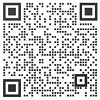
get in touch with us


When carrying out water rescue work, it is the key to quickly grasp the underwater situation of the area to be searched and rescued. In the past, the working mode of relying on divers to scour underwater was very inefficient. Long-term underwater operations are a great challenge to the physical fitness of divers. Working in unfamiliar waters, potential entanglements, sharp objects, etc. pose a threat to the safety of divers. Therefore, it is particularly important to choose modern and intelligent water rescue equipment. Using single-beam image sonar, the underwater situation within a few hundred meters can be displayed on the land monitoring terminal in the form of images within a few minutes. This will allow the diver to grasp the position information of the person to be rescued underwater before entering the water, saving a lot of time for scouting; at the same time, it can also inform the diver in advance of information such as underwater reefs and entanglements. At the same time, the on-shore personnel can grasp the underwater dynamics through the real-time feedback of the sonar images, and provide the divers with immediate safety assistance and prompts.
Meanwhile, the search data recorded by the sonar can be handed over to the public security and other relevant departments as evidence on the record.
“Sending a police officer underwater in zero visibility without scanning sonar is like sending an officer on patrol without a bulletproof vest“
————Winnipeg Police Services
With more than 80 MS 1000 Scanning Sonar systems currently being used by police and public safety dive teams tasked with body and evidence search operations, this sonar has a world-wide proven record of success. Ideally suited for independent use from a boat, the MS 1000 is easy to use and can be effectively deployed, operated and recovered by a two-man team.
Unlike side-scan sonar that must be towed to obtain a readable image, scanning sonar is typically tripod-deployed and the operator has the advantage of time to interpret multiple scans of the same target at different scale ranges. Once a likely target is identified, the system can then be used-even in zero visibility-to efficiently guide a diver or ROV to any target of interest.
The MS 1000 software operates on a PC using a Windows™ platform, and can be powered by either an AC or DC voltage supply. The MS 1000 also supports the input of GPS data and automatically allows the operator to determine the real-world coordinates of any target.
Sonar equipment configuration for SAR operations
-Computer with MS 1000 Pc-based Sonar Software
-Splashproof MS 1000 Interface Unit
-Kevlar operations cable (75m-100m recommended)
– 675 kHz High Resolution Scanning Sonar Head with fan transducer (or Multi Frequency High Resolution Sonar Head) with compass option
-Tripod
-Handcontroller
Consider using a daylight viewable PC display or having a shade cover to make it easier to observe the screen. A second monitor is also recommended for search operations. The MS 1000 has a built-in ” Trackplotter ” module that allows the operator to view sonar coverage and determine the geographic coordinates of targets when a GPS with an output NMEA string is integrated with the MS 1000 program.
The “target marker” , shown in the below image , was a 1 X1 X0 . 5m ( approximately 3×3 X 1.5’) PVC frame covered with wire fencing and positioned ( dropped ) near the victim prior to the dive. Even with a minor course correction , divers were directed to the target in 75m ( 246 ) water depth and confirmed sighting the body at 5 minutes and 38 seconds after leaving surface . In-water visibility was approximately 4m (13.1’ ).

Address:Room 413, Building B, No.50, Lane 2700, Lianhua South Road, Minhang District, Shanghai
Tel:+86 021-64050257
Email:mail@seawardtech.com.cn
